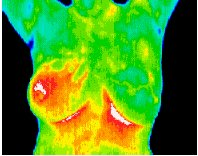Stay Informed
Our "gold standard" for breast cancer screening is mammography, clinical breast exam and self-breast exam. Other techniques are used but ALL current technologies examine structure; something is formed and large enough to be seen or felt. However, it is well-documented that a mass that is detected by mammography has been growing for 8-10 years before it was detected. Is this early detection?
A change in the sensitivity of your breasts, other than pain, might be a symptom of menopause, but it also might be something more severe. It could be mastic breast tissue, cysts, breast disease, or even neuropathy related to multiple sclerosis or fibromyalgia. It can also be a warning sign of breast cancer.
The new government recommendations on breast cancer screening were surprising to many doctors. The government is currently recommending against regular mammography tests for women aged 40 to 49. The guidelines also downplay the effectiveness of self-examinations and advise that women aged 50 to 74 years receive mammograms every other year.The change in early detection direction came from a U.S. Preventive Services Task Force comprised of a government panel of doctors and scientists. They concluded that early and frequent screenings by mammography often lead to false alarms and unneeded biopsies without substantially improving a woman’s odds of survival.


